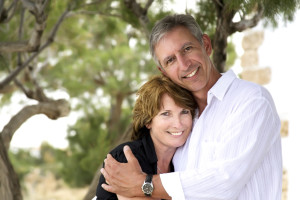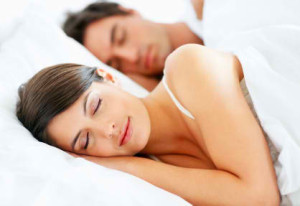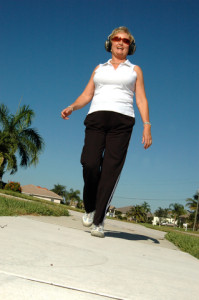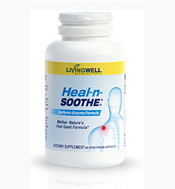 Nearly half of U.S. adults (47 percent) struggle with at least one type of chronic pain, according to a survey of 353,000 people from Gallup-Healthways.[i] Among them, 31 percent have neck or back pain, 26 percent have leg or knee pain, and 18 percent have another kind of pain.
Nearly half of U.S. adults (47 percent) struggle with at least one type of chronic pain, according to a survey of 353,000 people from Gallup-Healthways.[i] Among them, 31 percent have neck or back pain, 26 percent have leg or knee pain, and 18 percent have another kind of pain.
Further, among those in their late-40s to late-80s, more than one in five have pain that comes and goes. With statistics like these it may seem as though pain is a fact of life, but let me assure you … it is not.
A sizable number of Americans live their lives in pain-free bliss, but they weren’t always that way. For many, the road to becoming pain-free was a long one; a journey that often started with a prescription for painkillers.
Up to 8 million Americans are currently using powerful opioids for long-term pain management, which a National Institutes of Health (NIH) report found has created a “‘silent epidemic’ of distress, disability, and danger to a large percentage of Americans.”[ii][iii]
While the effectiveness of long-term opioid therapy could not be determined, the report found a “dose-dependent risk for serious harms,” including an increased risk for overdose, opioid abuse, fractures, myocardial infarction and sexual dysfunction. It’s side effects like these that lead many Americans to ultimately start searching for non-drug options to heal and relieve their chronic pain.
And you know what? These do exist. Often, they’re more effective than pain meds and, almost always, they’re safer. People who are living their lives pain-free are doing so not because they’ve relegated themselves to a lifetime of drug therapy.
They’re doing so because they’ve figured out that relieving pain involves tackling the problem from multiple angles by making healthy changes in your life. The first step to joining the ranks of “pain-free people,” however, is simply realizing that chronic pain is not “normal” … and it’s not something you have to live with.
What Pain-Free People Know That Pain Sufferers Don’t: 7 “Secrets”
 7. Better Sleep Leads to Less Pain
7. Better Sleep Leads to Less Pain
If you have trouble sleeping, you’re 1.5 times more likely to suffer from back pain at some point in your life.[iv] Why does lack of sleep increase your risk of chronic pain? There might be a “biological factor” that hasn’t yet been identified, but stress is also likely involved.
Researched published in Arthritis and Rheumatology in 2014 also found that non-restorative sleep was the strongest independent predictor of widespread pain in older adults – even stronger than factors such as anxiety, cognitive problems or osteoarthritis.[v] Those who reported feeling tired or worn out after a night of sleep were nearly twice as likely to develop widespread pain than people without sleep problems.
The link makes sense, since lack of sleep is known to trigger an inflammatory response in your body, and inflammation is often at the root of chronic pain. Fortunately, there are several key things you can do to help yourself sleep better … like turning off your electronic gadgets (and your TV) at night.
Artificial light, and particularly the blue light emitted by many electronics, may suppress melatonin, a light-sensitive hormone that that promotes sleep.[vi] When I’m having trouble sleeping, or find I’m waking up feeling unrested, I also take Sleepzyme, which contains the natural sedative Valerian plus nine other proven, all-natural sleep aids.
6. Your Diet Matters
The food you eat can play a major role in how you feel – and that includes your physical aches and pain. Certain foods are highly inflammatory, which makes sense because inflammation is part of your body’s immune response – and 70 percent of your immune system cells are in your gut.
While inflammation is beneficial in the short term (it helps your wounds and infections heal), when inflammation becomes chronic – as it can when you eat pro-inflammatory foods – it contributes to disease and exacerbates pain. Certain foods and beverages are naturally anti-inflammatory – and you can read about 10 of them here. Following an anti-inflammatory diet is key to living pain-free.
 5. Movement Helps You Stay Functional and Independent
5. Movement Helps You Stay Functional and Independent
Exercising regularly has been found to reduce anxiety and depression, improve physical capacity, increase functioning and independence, and reduce morbidity and mortality in those with chronic pain.[vii] No matter what your age, an exercise plan can be tailored to fit your needs (consult a personal trainer for tips, especially if your pain is severe).
4. Spinal Decompression Works Wonders for Back Pain
When you decompress your spine you increase the space between your vertebrae, relaxing the pressure on your discs, ligaments and nerve roots. Increasing intra-vertebral space means reducing pressure on the nerve roots, which means less back pain and less likelihood of nerve root damage.
When you oscillate up and down while in a decompression position, it creates a pumping action for the fluids around your spinal discs. This forces waste out and draws in fluid around your discs.
The Back Ease is a device I personally recommend everyone use (even those without back pain) due to its amazing ability help improve and maintain mobility, correct alignment from your shoulders down through your spine to your hip as well as heal and strengthen your spine over the long term.
Instead of turning you upside down as is done with traditional inversion tables, the Back Ease — Spinal Decompression System lets you comfortably decompress your spine by simply leaning into the device. The result is short-term (sometimes instantaneous) pain relief coupled with long-term maintenance and healing.
 3. Far-Infrared Heat is Healing
3. Far-Infrared Heat is Healing
Heat has been scientifically proven to provide pain relief. [viii] Studies show that heat receptors located at injury sites in your body can actually block chemical messengers that allow your body to detect pain. Heat has actually been shown to “deactivate pain at the molecular level in much the same way as pharmaceutical painkillers work.”[ix]
However, only far-infrared heat has therapeutic effects, helping to boost your circulation, break down and flush out toxins from your tissues, relax muscle cramps and more. The Deep Heat collection of far-infrared heating pads sends warmth up to 20 times deeper below your skin than conventional electric heating pads. This heat stays with you for up to six hours and promotes healing so the pain stays away.
2. Emotional Stress Makes Pain Worse
The stress hormone cortisol, which is produced by your adrenal glands in response to stress, is often elevated in people with uncontrolled pain. Stress may interfere with your body’s ability to regulate inflammation, which plays a key role in your pain and your risk of chronic diseases.[x] This occurs because when you’re under chronic stress, your tissues become less sensitive to the spikes in cortisol. Psychology professor Sheldon Cohen explained:[xi]
“Inflammation is partly regulated by the hormone cortisol and when cortisol is not allowed to serve this function, inflammation can get out of control.”
Meditating or trying other relaxation techniques (yoga, saunas, nature walks, etc.) can help to reduce your stress levels, and here are some great tips for increasing your happiness.
1. Proteolytic Enzymes are Crucial
Proteolytic enzymes are a type of digestive enzyme that help digest animal proteins. But, far more than this, proteolytic enzymes can migrate to other parts of your body, such as your bloodstream, where they literally seek and destroy other protein “danger zones,” like scar tissue, hardened proteins and blood vessels packed with fibrin. These powerhouse enzymes work systemically to fight inflammation in your body, which, again, is a leading cause of chronic pain.
Proteolytic enzymes have an unsurpassed ability to fight chronic inflammation and underlying pain, operating on a “lock-and-key” basis, which means they can recognize good prostaglandins from bad prostaglandins (prostaglandins are hormone-like substances involved in inflammation).
When proteolytic enzymes’ teeth fit into a ‘bad’ prostaglandin that’s already run its course and has no more use, they dispose of it to let the GOOD prostaglandin come in and get rid of the pain.
Proteolytic enzymes are naturally produced in your pancreas, but your natural production declines with age; these inflammation-busters become largely depleted as you hit 40 and over, which may be why so many in this age group experience nagging pain. If you have blood-clotting disorders, chronic fatigue, high cholesterol, obesity, other chronic health ailments or even grey hair, these could be signs that you’re already enzyme deficient.
Fortunately, there’s Heal-n-Soothe, the best systemic enzyme formula to replenish your body’s supply of vital enzymes. Heal-n-Soothe® not only has the most powerful combination of natural anti-inflammatory and pain-relieving ingredients, it also has the strongest and highest potency of any proteolytic enzyme formulation available.
[i] Huffington Post April 30, 2015
[ii] Ann Intern Med. 2015;162(4):276-286.
[iii] TIME January 12, 2015
[iv] PLoS ONE, 2014; 9 (8): e103591
[v] Arthritis Rheumatol. 2014 Mar;66(3):757-67.
[vi] NYTimes.com July 4, 2011
[vii] Curr Headache Rep. 2012 Apr;16(2):153-61.
[viii] Cochrane Database Syst Rev. 2006 Jan 25;(1):CD004750.
[ix] Science Daily July 5, 2006
[x] Proc Natl Acad Sci U S A. 2012 Apr 17;109(16):5995-9.
[xi] Huffington Post March 4, 2012


